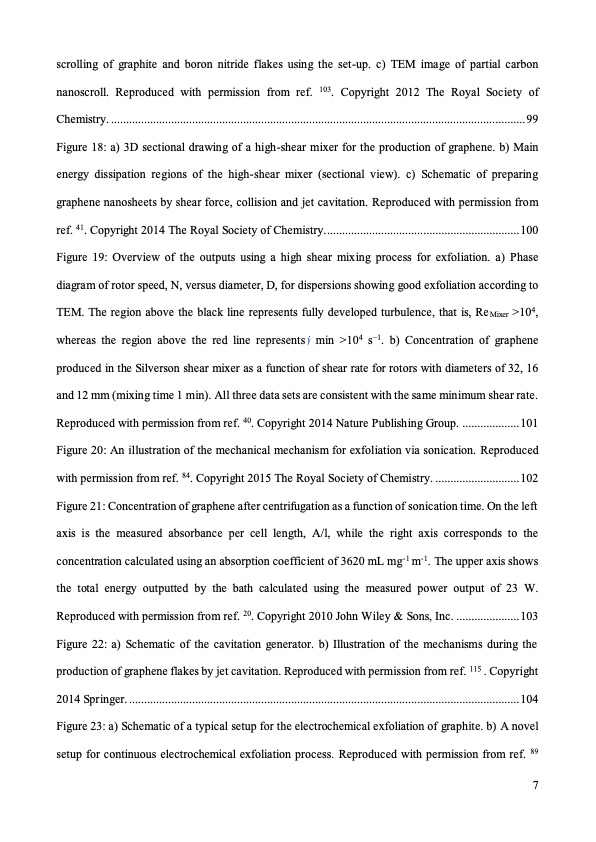
PDF Publication Title:
Text from PDF Page: 007
scrolling of graphite and boron nitride flakes using the set-up. c) TEM image of partial carbon nanoscroll. Reproduced with permission from ref. 103. Copyright 2012 The Royal Society of Chemistry. .......................................................................................................................................... 99 Figure 18: a) 3D sectional drawing of a high-shear mixer for the production of graphene. b) Main energy dissipation regions of the high-shear mixer (sectional view). c) Schematic of preparing graphene nanosheets by shear force, collision and jet cavitation. Reproduced with permission from ref. 41. Copyright 2014 The Royal Society of Chemistry.................................................................100 Figure 19: Overview of the outputs using a high shear mixing process for exfoliation. a) Phase diagram of rotor speed, N, versus diameter, D, for dispersions showing good exfoliation according to TEM. The region above the black line represents fully developed turbulence, that is, ReMixer >104, whereas the region above the red line represents min >104 s−1. b) Concentration of graphene produced in the Silverson shear mixer as a function of shear rate for rotors with diameters of 32, 16 and 12 mm (mixing time 1 min). All three data sets are consistent with the same minimum shear rate. Reproduced with permission from ref. 40. Copyright 2014 Nature Publishing Group. ...................101 Figure 20: An illustration of the mechanical mechanism for exfoliation via sonication. Reproduced with permission from ref. 84. Copyright 2015 The Royal Society of Chemistry. ............................102 Figure 21: Concentration of graphene after centrifugation as a function of sonication time. On the left axis is the measured absorbance per cell length, A/l, while the right axis corresponds to the concentration calculated using an absorption coefficient of 3620 mL mg-1 m-1. The upper axis shows the total energy outputted by the bath calculated using the measured power output of 23 W. Reproduced with permission from ref. 20. Copyright 2010 John Wiley & Sons, Inc. .....................103 Figure 22: a) Schematic of the cavitation generator. b) Illustration of the mechanisms during the production of graphene flakes by jet cavitation. Reproduced with permission from ref. 115 . Copyright 2014 Springer...................................................................................................................................104 Figure 23: a) Schematic of a typical setup for the electrochemical exfoliation of graphite. b) A novel setup for continuous electrochemical exfoliation process. Reproduced with permission from ref. 89 7PDF Image | graphene production via nonoxidizing liquid exfoliation

PDF Search Title:
graphene production via nonoxidizing liquid exfoliationOriginal File Name Searched:
Graphene-R2-review.pdfDIY PDF Search: Google It | Yahoo | Bing
Salgenx Redox Flow Battery Technology: Power up your energy storage game with Salgenx Salt Water Battery. With its advanced technology, the flow battery provides reliable, scalable, and sustainable energy storage for utility-scale projects. Upgrade to a Salgenx flow battery today and take control of your energy future.
| CONTACT TEL: 608-238-6001 Email: greg@infinityturbine.com | RSS | AMP |